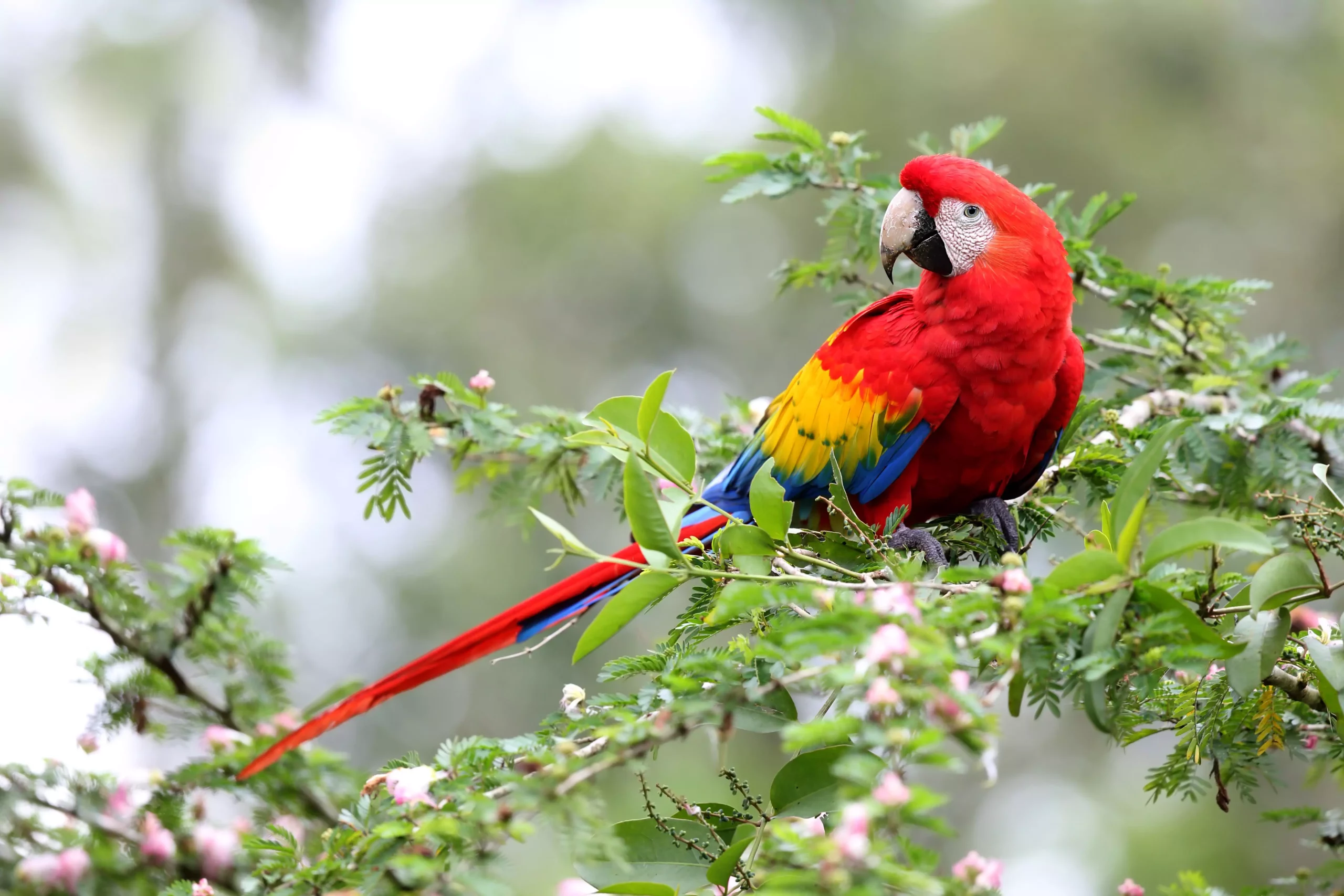Macaws are a captivating and vibrant group within the order Psittaciformes, which is home to over 400 types of parrots. Among these avian wonders, macaws reign supreme as the largest species. Typically weighing between two to four pounds, they possess a solid build that adds to their striking presence. The hyacinth macaw—the largest of the macaw family—stands out, measuring up to an astounding three and a half feet from beak to tail. Their impressive wingspan can extend to 60 inches, demonstrating their majestic flight capability. However, it is crucial to recognize the diversity within the macaw family, as it includes a range of sizes and types, from the compact mini macaws, measuring around 12 inches, to their more massive relatives.
One of the most distinctive characteristics of macaws is the bare ring of skin that surrounds their eyes. This feature serves not only as a unique identifier but also enhances their expressive facial features, enabling them to communicate their moods effectively. Despite their size variation, all macaws share several inherent traits, distinguishing them as a remarkable members of the parrot family. Their vivid plumage, which can include shades of blue, yellow, green, and red, makes them visually stunning, captivating bird enthusiasts and casual observers alike.
prospective macaw owner must be acutely aware of the extensive time commitment required to care for these birds. With proper care and attention, certain species—like the blue and gold macaws—can live for an astonishing 60 years, and some have even been known to live beyond 80 years. This longevity places macaws in a unique category: potential owners must be prepared for a lifelong relationship. It is not uncommon for macaws to outlive their human companions, making it essential to think ahead about their future care. Those considering adoption are encouraged to explore the option of providing a forever home to older birds, as they often have much to offer in companionship and affection.
The pet trade has brought forth an entire array of hybrid macaws, which are bred for their striking colors and unique characteristics. Popular hybrids such as the Catalina, harlequin, and Camelot macaws have risen to fame among pet owners. However, this trend has sparked a division in the avian community. Critics argue that hybrid macaws lack the natural heritage of their wild counterparts and advocate against their breeding, emphasizing the importance of preserving the natural gene pool that exists among the various macaw species. This dilemma highlights the responsibility that comes with pet ownership and the ethical considerations that should guide decisions about acquiring a bird.
Despite their impressive size and the powerful beaks that come with it—enabling species like the hyacinth macaw to crack open coconut shells—many macaw breeds are affectionate and sociable. Hyacinth macaws, in particular, have earned the reputation of being “gentle giants.” This moniker speaks volumes about their temperament, especially when they have been properly socialized from a young age. However, potential owners must remain cognizant of the significant responsibility that comes with nurturing these magnificent birds. Their strong beaks can be a double-edged sword; while they can be affectionate companions, they can also become destructive if not given enough mental stimulation and physical interaction.
Just like other members of the parrot family, macaws require regular social interaction and mental challenges to thrive. Without sufficient engagement, these intelligent birds may resort to misguided behaviors, such as excessive vocalization or feather plucking. Their powerful beaks can lead to significant destruction within the household if they are left unattended and bored, causing them to chew on furniture or other objects. Therefore, it is critical that macaw owners devote time to interactive activities such as training sessions, playtime, and enriching environments to maintain their physical and emotional well-being.
Macaws are a beautiful and enchanting part of avian life that requires serious commitment and understanding. From their striking size and vibrant colors to their affectionate nature and penchant for mischief, they exemplify what it means to be a parrot enthusiast. A thorough understanding of their needs will ensure that both the bird and its owner thrive in their companionship, fostering a lasting bond that can withstand the test of time.

